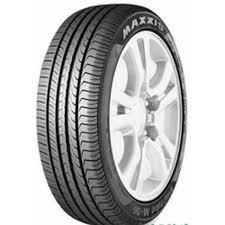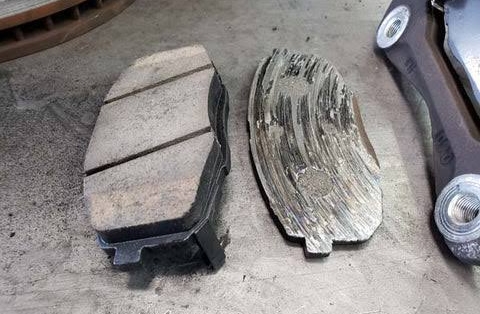Articles
Why Tires Maintenance are Crucial for Road Safety

Tires are the only part of a vehicle that makes direct contact with the road, playing a vital role in how a car performs, maneuvers, and brakes.
Proper tire maintenance is essential for road safety, as it impacts everything from handling and fuel efficiency to braking distance and stability.
Neglecting tire care can lead to unsafe driving conditions, reduced tire lifespan, and costly repairs.
In this guide, we’ll explore why tire maintenance is crucial for road safety and the key steps every driver should take to maintain their tires.
1. Better Traction and Handling
One of the primary reasons why tire maintenance is critical is that it ensures optimal traction and handling.
Worn or improperly inflated tires don’t grip the road as well, especially on wet or slippery surfaces. This can lead to longer stopping distances, skidding, and even loss of control.
Maintaining proper tire tread depth, which is essential for traction, helps your vehicle respond effectively in challenging weather conditions.
Ensuring your tires are in good condition allows your car to handle curves, turns, and sudden stops with greater control, enhancing safety for you and other drivers.
2. Reduced Risk of Blowouts
A tire blowout can be extremely dangerous, especially when driving at high speeds. Blowouts are often caused by under-inflated tires, which generate excess heat and can weaken the tire structure over time.
Regularly checking and maintaining the right tire pressure significantly reduces the risk of a blowout by ensuring the tire wears evenly and maintains its structural integrity.
Additionally, damaged tires or tires with sidewall punctures are at a higher risk of blowouts. Promptly repairing or replacing damaged tires is essential to avoid sudden blowouts that could lead to severe accidents.
3. Shorter Braking Distances
Properly maintained tires can help reduce braking distances, which is essential for road safety.
When tires have adequate tread and are properly inflated, they maximize the contact area with the road, ensuring a better grip.
This becomes especially critical in wet or icy conditions, where a vehicle with worn tires will require a longer distance to stop.
By regularly monitoring tire tread and replacing tires when necessary, drivers can ensure that their braking performance remains effective, reducing the risk of rear-end collisions and other accidents caused by longer braking distances.
4. Enhanced Fuel Efficiency
Tire maintenance not only improves safety but also positively impacts fuel efficiency. Under-inflated tires create more rolling resistance, which forces the engine to work harder and consume more fuel.
Properly inflated tires help your vehicle operate at peak efficiency, which can improve gas mileage and reduce fuel costs.
Maintaining correct tire pressure is a simple step that enhances road safety and cuts down on fuel expenses.
According to the U.S. Department of Energy, proper tire inflation can improve fuel efficiency by up to 3%, translating to significant savings over time.
5. Extended Tire Lifespan
Regular tire maintenance helps extend the lifespan of your tires. By checking the air pressure, inspecting for uneven wear, and rotating your tires as recommended, you ensure that the tires wear evenly and last longer. Neglecting maintenance can lead to premature wear, forcing you to replace tires sooner than necessary.
Proper tire care also allows you to spot and address issues early, such as alignment problems or uneven tread wear, which can prevent expensive repairs down the road.
This proactive approach not only keeps you safe but also saves money on tire replacements and repairs.
6. Improved Stability and Control
Good tire maintenance is essential for maintaining stability and control on the road. Tires in poor condition may reduce the stability of the vehicle, especially during high-speed driving or sharp turns.
When tires are properly inflated and have adequate tread depth, they provide the necessary grip and stability, helping you stay in control even in adverse conditions.
When tires are unevenly worn or underinflated, the risk of fishtailing or hydroplaning increases, making it harder to control the vehicle.
By maintaining your tires, you can drive confidently and keep your vehicle stable, even in challenging road conditions.
7. Preventing Hydroplaning and Skidding
Hydroplaning occurs when a layer of water builds up between the tire and the road surface, causing the car to lose contact with the road.
Worn tires with low tread depth are more susceptible to hydroplaning, as they can’t effectively channel water away from the tire surface.
Regularly checking tread depth and replacing worn tires can help prevent hydroplaning and reduce the chances of skidding in wet conditions.
For safe driving in rainy or snowy conditions, tire tread should have a depth of at least 3/32 inches, with 4/32 or more being preferable.
You can use a tread depth gauge or perform a simple penny test by placing a penny head-down into the tread grooves. If you can see the top of Lincoln’s head, it’s time to replace the tires.
8. The Importance of Tire Rotation and Alignment
Regular tire rotation and wheel alignment are essential parts of tire maintenance that can improve road safety.
Tire rotation involves changing the position of each tire on the car to ensure they wear evenly. Most manufacturers recommend rotating tires every 5,000 to 7,500 miles.
Evenly worn tires provide better handling and a smoother ride, which is crucial for safe driving.
Alignment issues can cause uneven wear, making tires less effective and potentially leading to a loss of control.
Misaligned wheels can also strain other components of your vehicle’s suspension and steering systems, further compromising safety.
Routine alignments and rotations keep tires in optimal condition, ensuring safer handling and performance.
9. Regular Tire Inspections Can Detect Problems Early
Conducting regular tire inspections allows you to identify potential issues before they turn into bigger problems.
During these inspections, look for visible damage, such as cracks, punctures, or bulges on the tire sidewalls.
Inspecting tires for foreign objects like nails or glass, as well as checking for signs of uneven tread wear, can help you catch problems early on.
If you notice unusual vibrations or a pulling sensation while driving, it could indicate a tire balance or alignment issue.
By addressing these issues early, you can prevent dangerous situations and ensure a safer driving experience.
10. Tire Maintenance Reduces the Risk of Accidents
Tires are an essential component of vehicle safety, and poorly maintained tires significantly increase the risk of accidents.
Many road accidents are attributed to tire-related issues, such as blowouts, skidding, or loss of control.
By ensuring that your tires are properly inflated, have adequate tread, and are free from damage, you reduce the chances of encountering dangerous situations on the road.
A report by the National Highway Traffic Safety Administration (NHTSA) found that tire issues contributed to around 11,000 car accidents each year in the United States.
Maintaining tires can therefore play a major role in preventing accidents and protecting not only your safety but also the safety of others on the road.
Tire maintenance is crucial for road safety, as it impacts handling, braking, stability, and fuel efficiency.
By keeping your tires in optimal condition through regular inspections, proper inflation, rotation, and alignment, you can reduce the risk of accidents, increase fuel efficiency, and save money in the long run.
Simple steps like checking tire pressure, monitoring tread depth, and ensuring proper alignment can go a long way in keeping you safe on the road.
Neglecting tire maintenance may save you a few minutes in the short term, but it could lead to costly and dangerous consequences down the line.
For safer and more efficient driving, make tire maintenance a priority and enjoy the peace of mind that comes from knowing your vehicle is equipped to handle the road effectively.






















